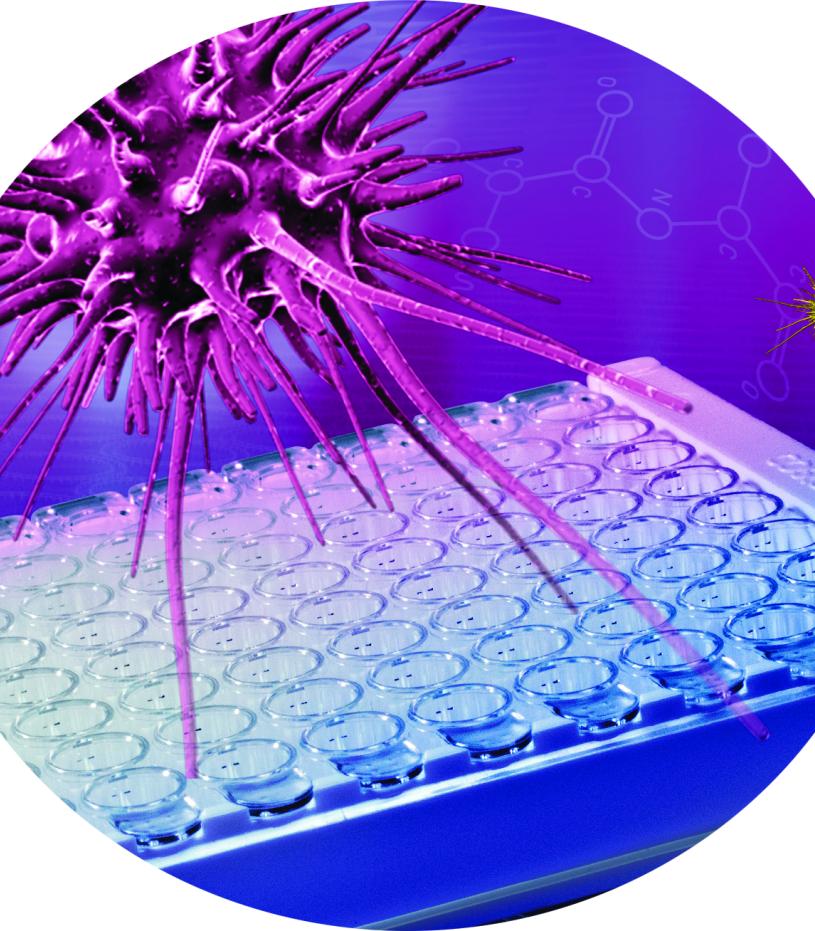Basic Information
It is usually best to work with protein solutions on wet ice. The low temperature will slow inactivation of the protein.
Never vigorously agitate a protein sample. The preferred method of mixing protein solutions is to gently mix with a micropipettor using a polypropylene tip. (Do not use larger pipettors with polystyrene pipettes.)
An alternative for larger solutions is gentle inversion in a 15 to 50 ml capped polypropylene tube.
For volumes over 50 ml, mixing using a stir bar is acceptable, but not too vigorously. Never introduce foam or air bubbles – these denature proteins.
Do not use glass or polystyrene containers or pipettes for antibodies or interferons unless these proteins are diluted in serum or albumin-containing media.
Freeze/Thaw of proteins. Usually a quick freeze and a quick thaw are the best methods for retaining protein activities. Rapid freezing and thawing prevent phase partitioning of the salts or protein. If a protein solution is found to be cloudy upon thawing, the bioactivities of the protein are likely to have been adversely affected.
Freezing Method
Preferred:
-
Be aware that glass tubes can crack, leak, or explode upon snap freezing or thawing of solutions. Polypropylene tubes are recommended for snap freezing.
-
Prior to freezing, make sure the solution identification number is written on the top of each tube and/or on a freezer-safe label using an alcohol-resistant marker.
-
Always take appropriate precautions when working with dry ice. Handle only with appropriate tools and gloves. Never touch dry ice or its solutions with bare hands. Refer to the MSDS sheet for dry ice/solid CO2. Also, when working with dry ice and its solutions, be certain to work in a well ventilated area, preferably in a chemical fume hood where CO2 gas will not accumulate.
-
Set up a tube rack in an ice bucket.
-
In the ice bucket, surround the rack with dry ice and then add sufficient isopropanol to saturate the dry ice. Cover with an ice bucket lid.
-
Allow the liquid to cool until it has a syrupy consistency.
-
Place tubes in the rack allowing them to snap freeze in the covered ice bucket.
-
Once tube contents are frozen, rapidly wipe the liquid off (blot, do not wipe the label – alcohol can solubilize ink), transfer tubes to a pre-chilled box (possibly in another bucket with dry ice (no liquid!), then place tubes in a -80ºC freezer.
-
After the freeze, allow all the dry ice to evaporate in the fume hood and the alcohol to warm to room temperature.
-
Decant the remaining isopropanol into a bottle labeled according to OSHA and State labeling standards with the additional qualifier of “Freezing Isopropanol.” This isopropanol can be reused for freezing many times.
Alternative: A slightly less effective way to freeze the samples is simply to prepare a bucket of dry ice, then insert the tubes into the dry ice until they are almost buried. This will freeze the small aliquots sufficiently quickly, but freezing of larger volumes/tubes will take longer, allowing loss of homogeneity in the samples.
Avoid introducing bubbles or foam into any protein solution!
Most proteins are unstable at very dilute concentrations in the absence of carrier. Unless formulation work has been done to verify stability, do not dilute carrier-free solutions to protein concentrations below 100 μg/ml. This is only a guideline and needs to be verified for each protein. Be aware that all interferons will stick somewhat to plastics. When performing serial or multiple dilutions, change pipette tips between each dilution step. Rinsing the pipette tip is insufficient to prevent carryover between wells of tubes. Interferon beta protein tends to exhibit greater hydrophobicity than most interferon alpha proteins, thus more prone to “stickiness.”
Basic Information
It is usually best to work with protein solutions on wet ice. The low temperature will slow inactivation of the protein.
Never vigorously agitate a protein sample. The preferred method of mixing protein solutions is to gently mix with a micropipettor using a polypropylene tip. (Do not use larger pipettors with polystyrene pipettes.)
An alternative for larger solutions is gentle inversion in a 15 to 50 ml capped polypropylene tube.
For volumes over 50 ml, mixing using a stir bar is acceptable, but not too vigorously. Never introduce foam or air bubbles – these denature proteins.
Do not use glass or polystyrene containers or pipettes for antibodies or interferons unless these proteins are diluted in serum or albumin-containing media.
Freeze/Thaw of proteins. Usually a quick freeze and a quick thaw are the best methods for retaining protein activities. Rapid freezing and thawing prevent phase partitioning of the salts or protein. If a protein solution is found to be cloudy upon thawing, the bioactivities of the protein are likely to have been adversely affected.
Freezing Method
Preferred:
-
Be aware that glass tubes can crack, leak, or explode upon snap freezing or thawing of solutions. Polypropylene tubes are recommended for snap freezing.
-
Prior to freezing, make sure the solution identification number is written on the top of each tube and/or on a freezer-safe label using an alcohol-resistant marker.
-
Always take appropriate precautions when working with dry ice. Handle only with appropriate tools and gloves. Never touch dry ice or its solutions with bare hands. Refer to the MSDS sheet for dry ice/solid CO2. Also, when working with dry ice and its solutions, be certain to work in a well ventilated area, preferably in a chemical fume hood where CO2 gas will not accumulate.
-
Set up a tube rack in an ice bucket.
-
In the ice bucket, surround the rack with dry ice and then add sufficient isopropanol to saturate the dry ice. Cover with an ice bucket lid.
-
Allow the liquid to cool until it has a syrupy consistency.
-
Place tubes in the rack allowing them to snap freeze in the covered ice bucket.
-
Once tube contents are frozen, rapidly wipe the liquid off (blot, do not wipe the label – alcohol can solubilize ink), transfer tubes to a pre-chilled box (possibly in another bucket with dry ice (no liquid!), then place tubes in a -80ºC freezer.
-
After the freeze, allow all the dry ice to evaporate in the fume hood and the alcohol to warm to room temperature.
-
Decant the remaining isopropanol into a bottle labeled according to OSHA and State labeling standards with the additional qualifier of “Freezing Isopropanol.” This isopropanol can be reused for freezing many times.
Alternative: A slightly less effective way to freeze the samples is simply to prepare a bucket of dry ice, then insert the tubes into the dry ice until they are almost buried. This will freeze the small aliquots sufficiently quickly, but freezing of larger volumes/tubes will take longer, allowing loss of homogeneity in the samples.
Avoid introducing bubbles or foam into any protein solution!
Most proteins are unstable at very dilute concentrations in the absence of carrier. Unless formulation work has been done to verify stability, do not dilute carrier-free solutions to protein concentrations below 100 μg/ml. This is only a guideline and needs to be verified for each protein. Be aware that all interferons will stick somewhat to plastics. When performing serial or multiple dilutions, change pipette tips between each dilution step. Rinsing the pipette tip is insufficient to prevent carryover between wells of tubes. Interferon beta protein tends to exhibit greater hydrophobicity than most interferon alpha proteins, thus more prone to “stickiness.”


